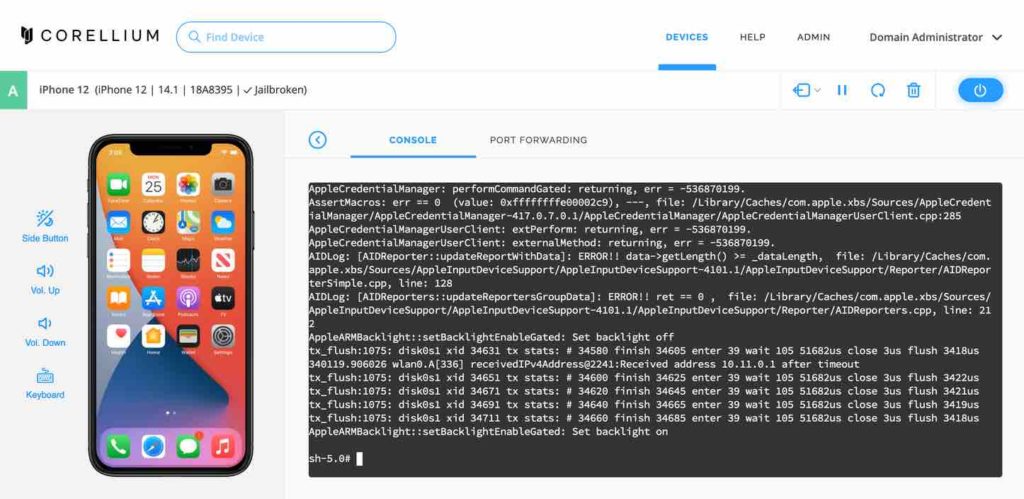- Ios Simulator On Macos
- Ios Simulator On Mac Os X
- Mac Os Simulator
- Ios Simulator Macos Download
- Ios Simulator Web
- IOS Simulator Step 1: Install Xcode This step is very easy but it takes a while. Open up the Mac App Store, search for Xcode, and hit. Step 2: Install Xcode Command Line Tools Open Xcode, then choose 'Preferences.' From the Xcode menu (or press ⌘+,). Step 3: Try it out.
- Install Xcode from the Mac App Store, it’s free, but it’s a big download, so make sure you have something to do while it’s downloading. Open Xcode once it’s done installing. Finish initial setup. Right-click the Xcode Application in your Applications folder, then choose “Show Package Contents”, then navigate to /Contents/Developer/Applications/iOS Simulator.app, and drag that.
- Platform: Windows and Mac. Pricing: $25.00. Download iPadian. This is one of the best iOS emulators for PC because it provides an incredibly user-friendly experience. It is widely utilized by developers to test the iOS apps that they are creating.
Besides the method in my last blog, I keep trying other methods to run the decrypted iOS App. Then I thought of the Xcode Simulator, which had no possibility to run the real iOS Apps before, due to the x86_64 platform restriction. But now, the Simulator from M1 Mac is also the arm64 architecture. Is it possible to run the decrypted iOS App in the simulator now ?
Of course, Yes Now !!!
On your Mac, find the Simulator via Spotlight or by using the following command: $ open -a Simulator Make sure your simulator is using a 64-bit device (iPhone 5s or later) by checking the settings in the simulator’s Hardware Device menu.
I wrote a tool to patch a macho file from iOS platform to Simulator platform.
Ios Simulator On Macos
Patch all the machos (include
frameworks,dylibs) within the iOS App by my toolad-hoccode signing (free developer)codesign -f -s - /path/to/machoDrag the iOS App to iOS Simulator, click to launch
Ios Simulator On Mac Os X
Next I will talk about how to find the patch points.
Drag the decrypted iOS App into the iOS Simulator, and click to launch.
I got the crash :
Mac Os Simulator
Note the Termination Reason: Binary with wrong platform.
Question: How does the OS distinguish the arm64 machos from different platforms ?

I found the answer from the dyld source code
Ios Simulator Macos Download
We can see there are at least 2 kinds of load commands that can be used to mark platform:
LC_BUILD_VERSIONLC_VERSION_MIN_XXX
From my test, it seems that the load command LC_ENCRYPTION_INFO[_64] is also marked as PLATFORM_IOS. So I have to patch 3 kinds of load commands to mark the macho as PLATFORM_IOSSIMULATOR:
- Remove the load command
LC_ENCRYPTION_INFO[_64] - Remove the load command
LC_VERSION_MIN_XXX - Patch the platform to
7 (PLATFORM_IOSSIMULATOR)in the commandLC_BUILD_VERSION
From my test, I can directly launch the iOS App from the Simulator after the patch, if SIP is disabled. And I have to re-sign it with ad-hoc (free developer) if SIP is enabled.
Through the effort before, I can launch the iOS App from Xcode Simulator successfully.
But there are some known issues for some specific Apps:
- Some iOS App Extensions process crash
- Crash due to lack of sandbox entitlements
- Maybe other issues for specific App
I have tried to patch to PLATFORM_MACOS directly:
- There is no problem for iOS command line program, and it is useful when you need to run iOS command line program on the M1 Mac.
- For iOS UI Application, we need to use environment variable
DYLD_FORCE_PLATFORM=2to help us loadUIKit.frameworkfrom/System/iOSSupportdirectory.
Ios Simulator Web

Next are the test results for arm64 macho loading :
Arm64executable process can loadarm64edylib directly.Arm64eexecutable process cannot loadarm64dylib.Patch
cpu subtypeto0x80000002can bypass the platform check to load it successfully.macOS process cannot load iOS platform dylib, error: mach-o, but not built for platform macOS
Just patch the load_command
0x25=LC_VERSION_MIN_IPHONEOSto0x24=LC_VERSION_MIN_MACOSX